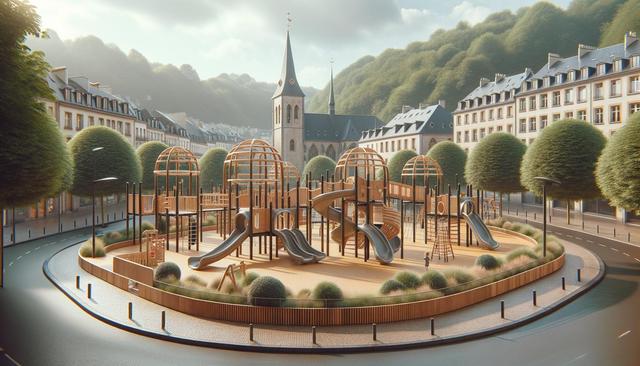
Playground System Installation in Luxembourg: Cost Estimates and Options
Understanding Playground System Installation in Luxembourg
Installing a playground system in Luxembourg involves a combination of careful planning, regulatory compliance, and thoughtful design. Whether it’s for a public park, schoolyard, or residential development, playgrounds need to meet safety standards while also being engaging and age-appropriate. The process typically starts with site evaluation and community consultation to determine the best type of equipment and layout. Depending on the location, permissions may be required from local authorities before any construction can begin. It’s important to consider factors such as accessibility, maintenance requirements, and environmental impact during the planning phase to ensure the project aligns with both user needs and regulatory expectations.
Cost Estimates for Installation
Costs for playground system installation in Luxembourg can vary widely depending on the size of the area, the complexity of the design, and the materials used. Basic installations, which include a few standard play structures and safety surfacing, typically start around €15,000 to €25,000. More elaborate playgrounds featuring custom designs, inclusive equipment, and advanced safety features can range from €40,000 to over €100,000. Key elements that influence the total cost include:
- Type and quantity of play equipment
- Ground preparation and surfacing (e.g., rubber, sand, mulch)
- Installation labor and logistics
- Compliance with safety and accessibility standards
- Ongoing maintenance and warranty coverage
Obtaining quotes from multiple suppliers and contractors is recommended to get a clear picture of the financial scope. Some municipalities or organizations may be eligible for grants or subsidies to support the installation of community-focused play areas.
Available Design Options
Playground system designs have evolved to accommodate a wide range of developmental needs and physical abilities. In Luxembourg, there is a strong emphasis on inclusive and sustainable design. Modern playgrounds often integrate natural materials and themes while offering physically and cognitively stimulating activities. Common design options include:
- Modular play structures with slides, climbing walls, and bridges
- Nature-based play zones using wood, stone, and greenery
- Inclusive play elements like wheelchair-accessible swings and ramps
- Adventure areas with rope courses and balance challenges
- Interactive panels and sensory equipment for younger children
Customization is possible for those looking to reflect local culture or educational themes. Designers often work closely with stakeholders to ensure the final layout is both functional and visually appealing.
Materials and Safety Considerations
Safety is a top priority in any playground installation. Materials used must comply with European safety standards, particularly EN 1176 and EN 1177, which govern playground equipment and impact-absorbing surfaces. In Luxembourg, commonly used materials include treated wood, stainless steel, and high-density polyethylene. Each material has its own advantages concerning durability, cost, and aesthetic appeal. For example, wood offers a natural look and is often used in eco-conscious designs, while steel provides high durability and low maintenance.
In terms of surfacing, options include:
- Rubber tiles or poured-in-place rubber for impact absorption
- Engineered wood fiber or mulch for cost-effectiveness
- Artificial turf for aesthetic consistency and comfort
- Sand or gravel, often used in traditional playgrounds
Routine inspections and maintenance are essential to ensure the longevity and safety of the equipment. Many suppliers offer service contracts or training for facility operators to manage upkeep effectively.
Working with Local Experts and Suppliers
Collaborating with experienced suppliers and installation experts based in Luxembourg can streamline the entire process. Local providers are familiar with regional regulations, climate considerations, and community expectations. They also often offer tailored solutions that reflect Luxembourg’s specific urban planning and sustainability goals. Before selecting a partner, it’s advisable to:
- Review portfolios of completed projects
- Request references and client testimonials
- Confirm certifications and compliance with EU regulations
- Discuss warranty terms and post-installation support
Additionally, engaging with landscape architects and urban planners can enhance integration with existing surroundings. A well-executed playground system not only serves as a recreational space but also contributes to community building and urban development.
Conclusion: Planning for Long-Term Value
Installing a playground system in Luxembourg is a multifaceted project that requires attention to planning, budgeting, and design. Understanding the various cost factors and available options can help stakeholders make informed decisions that align with their goals and resources. By prioritizing quality materials, safety, and inclusive design, communities can create spaces that provide lasting value for children and families. Working with experienced local professionals ensures that the project meets all legal and functional requirements while enhancing the social and environmental fabric of the area.


